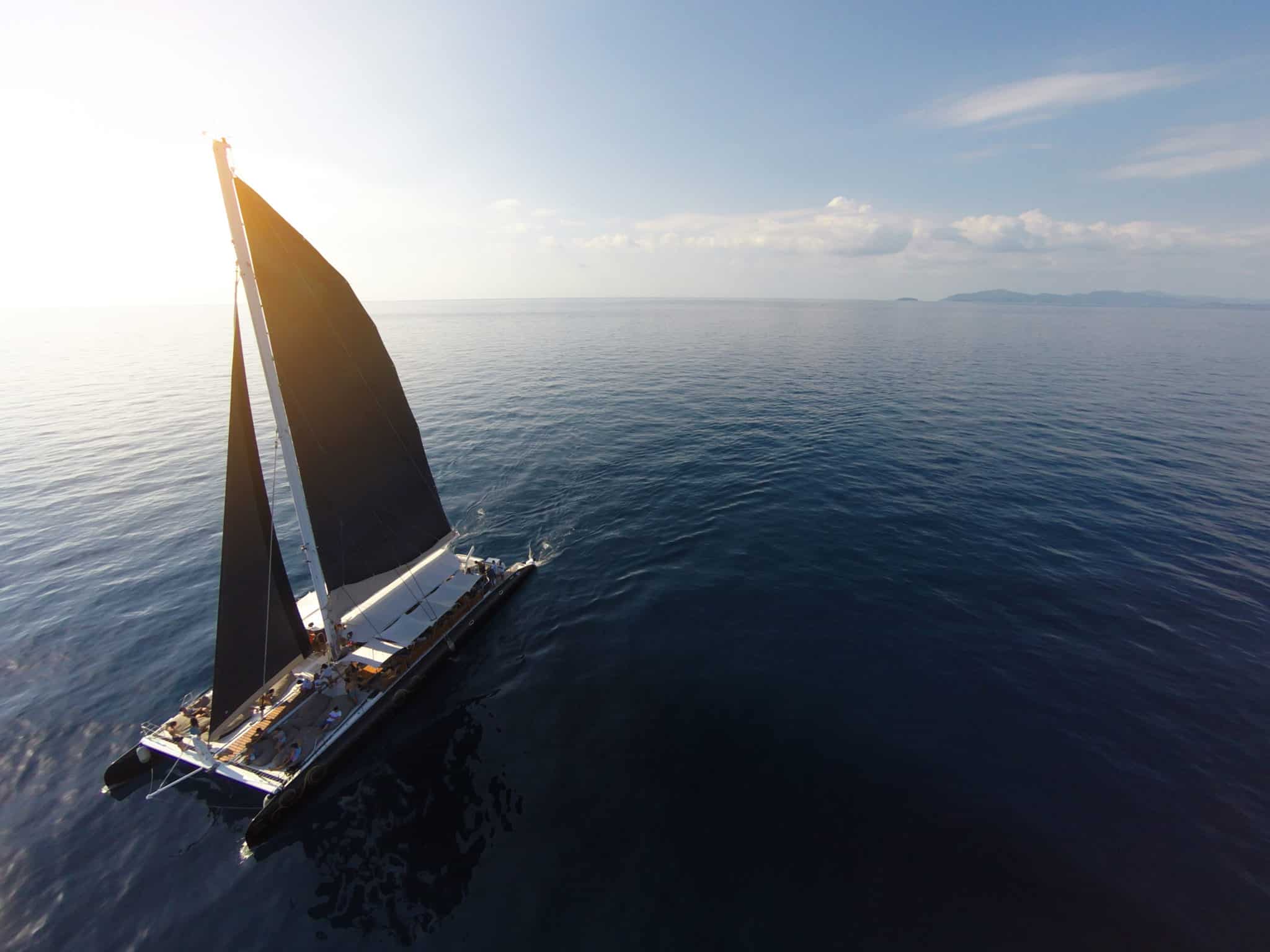Critical takeaways
- Reefing is a term in sailing for reducing the amount of sail exposed in a storm to help you maintain control of your boat.
- However, reefing too much may cause the vessel to stop moving altogether.
- Businesses facing a critical moment need to ‘reef’ their activities to avoid becoming overwhelmed by the critical moment while still maintaining progress towards their goals.
On a recent offshore sailing expedition, we encountered a significant storm, one big enough to cause concern. We took several evasive steps to maintain control, including battening everything down and reefing the sails. Reefing the sails is a technique where you partially furl the sails to lessen the amount of wind that’s affecting the boat. Reducing the force on the boat allows you to reassert control and to continue heading in the direction that you want to go.
The challenge is getting the amount of reefing correct.
Not enough leaves too much of the sail deployed and the boat is at the mercy of high winds. Too much and you don’t have enough sail deployed to control the boat. Now you’re likely to suffer damage from the waves.
Either too much or too little can lead to disaster with the boat capsizing or being swamped by waves. So the trick with reefing is to find that sweet spot that allows you to reassert control of the boat in these stormy conditions.
Not long afterward, we were running a crisis simulation for a firm in the financial industry, simulating a data breach. This breach would have been a significant critical moment but not a full-blown, existential crisis. This meant that the firm had to decide how they would manage the critical moment alongside critical operations. They would have to cut back their activities to allow themselves the mental and operational bandwidth to generate the speed they needed to deal with the situation. However, they would also have to ensure that essential functions that kept the business running continued.
But what to cut?
Similar to getting the right balance when reefing a vessel, it can be challenging to find the ‘sweet spot’ for a business. If you don’t cut back enough, you won’t have the capacity to mange the critical moment and all your routine operations. Both will suffer.
However, if you cut back too much and only focus on the critical moment, the business itself might flounder. You could ‘win’ the crisis but lose your business.
Therefore, you have to identify the key activities needed to keep the business moving: the programs or activities that are wholly critical to your strategy. Whether these are operational, marketing, a new product launch, or even executive speeches, if activities are essential to your survival, these must continue.
At the same time, you also need to know what to cut. This might mean reducing your regular social media activity, decreasing public appearances, or maybe even delaying a new product launch.
The litmus test is to ask whether cutting an activity will help you move forward or slow you down. That way you can work out how much to ‘reef’ the business.
The decision to reef your sails is a crucial one, but, as the adage goes, ‘as soon as you start thinking about it, you should start doing it.’ That means that you often start reefing before the storm hits.
The same applies in a corporate setting.
So start thinking about the amount of ‘sail’ the business should leave exposed as the crisis approaches. Then start reefing before it hits. That’s going to allow you to keep moving towards your strategic objectives and staying true to your values without the danger of becoming overwhelmed by the combined pressure of the crisis and normal operations.


